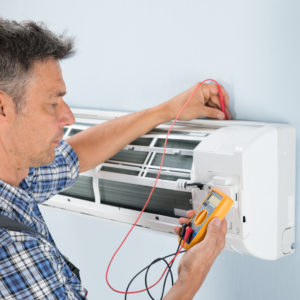 As the world’s attention turns to energy efficiency, HVAC installers who know their stuff will be in high demand. If you know what’s trending in equipment, you can help your customers score well with popular certification programs. This means you’ll be busy all year! Make sure you know what to look for in fittings to meet all the regulations coming down the pike.
As the world’s attention turns to energy efficiency, HVAC installers who know their stuff will be in high demand. If you know what’s trending in equipment, you can help your customers score well with popular certification programs. This means you’ll be busy all year! Make sure you know what to look for in fittings to meet all the regulations coming down the pike.
A New Kind of Cool
Air conditioner manufacturers will move toward using low Global Warming Potential (GWP) refrigerants because governments all over the world are phasing out the use of hydrofluorocarbons (HFC).
These changes are a result of the October 2016 passing of the Kigali Amendment in which all of the signatories of the Montreal Protocol agreed to phase down the use of HFCs. The changes are going to come into effect gradually in a combination of banned products and acceptable GWP levels.
For example, the US Environmental Protection Agency (EPA) has banned the use of HFCs R-134a and R-410A (effective January 2024), and the Canadian government has set a maximum 700 GWP limit for air conditioning chillers.
It’s tough for an industry to face yet another product change when the refrigerants banned as a result of the Montreal Protocol have not been fully phased out. But phasing down HFC will make a huge difference. According to the Canadian government, eliminating the use of HFCs can prevent up to .5 degrees Celsius of global warming.
In addition to the introduction of alternative refrigerant, the industry will also see more development in non-vapor compression systems.
Hot Competition
In 2017, the competition between rating systems will heat up on both sides of the border. BREEAM will see an uptake in certifications, LEED is still a force, and a couple of lesser-known programs are starting to attract awareness.
Green Globes has been gaining momentum. This program was developed in Canada and was acquired for use in the US by the Green Building Initiative. In the US it operates as Green Globes, and in Canada is run by the Building Owners and Managers Association (BOMA) has been rebranded as BESt (Building Environmental Standards). Green Globes/BESt is a self-assessment tool based on ASHRAE that is similar to LEEDs in its requirements.
Another program you will be hearing a lot about is WELL Building Standard, a system that addresses the impact a building has on human health. Wellness, which is anything that promotes human health and wellbeing, is poised to become the next trillion dollar industry, so WELL will be a valuable certification for office and residential buildings. Building ventilation will be a big deal with this program.
Proof of this trend can be found in the recent Bloc development in Los Angeles that is LEED-, BREEAM- and WELL-certified. While this may seem like overkill, the developers are attracting high-paying tenants. Their success may lead to a trend in multiple certifications for every building.
All the Variables
No matter which certification program wins out, energy efficient HVAC is going to be big. Variable speed equipment will be popular because this technology is capable of improving efficiency by as much as 40%.
Closer to Home
While the US may be withdrawn as a signatory of the Paris Agreement, many US cities are taking action to achieve the goals of the agreement. So local bylaws will require a variety of green standards.
American cities wanting to develop their own emissions plans may turn their attention north, where the city of Vancouver has a Zero Emissions Building Plan with the goal of zero emissions by 2030.
Brush up on your certification knowledge and get ready to take advantage of the green trends by positioning yourself as the installer who knows his stuff, including where to source quality parts like vents and wall caps.



